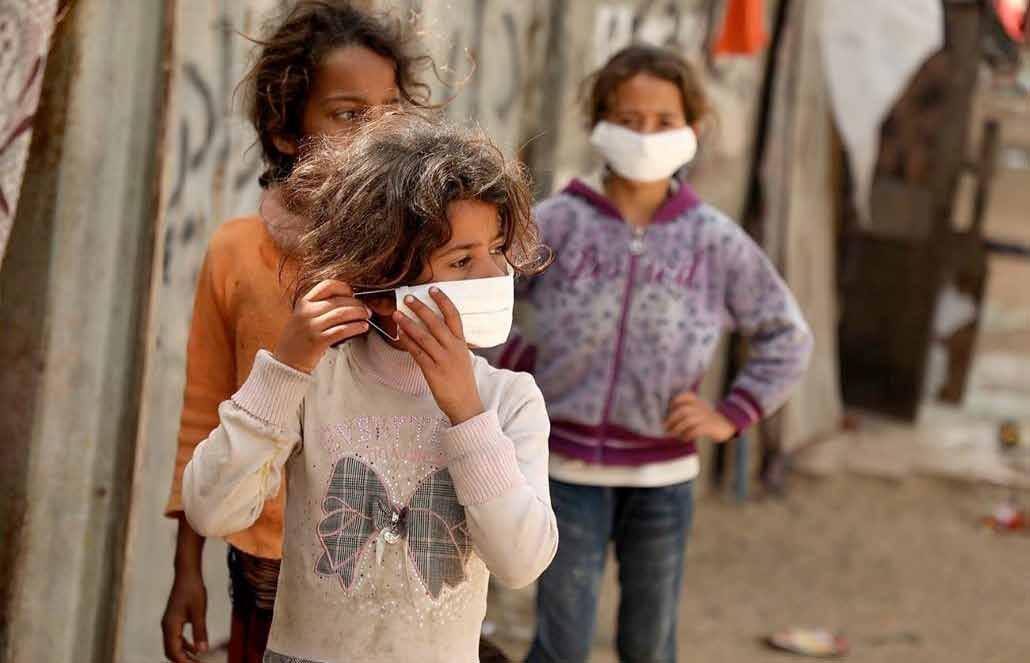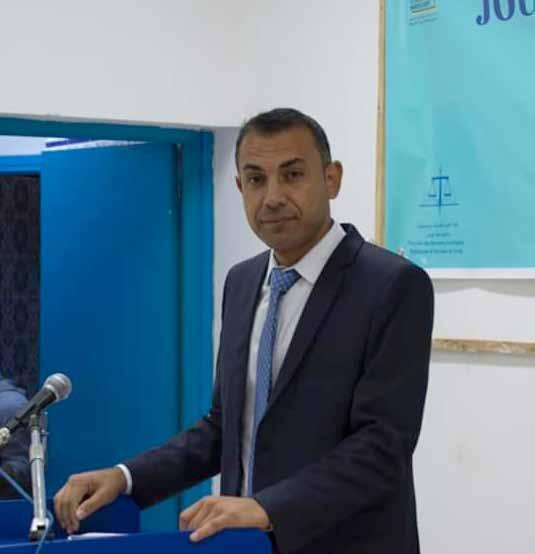
6 minute read
Issue 1796- April - 17/04/2020
peace process would require the Israeli citizens to be on board with the idea. Nihal Ibrahim is a young woman living in Ramallah and works for one of the civil society institutions. She notes that tensions between Palestinians and Israelis have simmered down recently. However, many grassroots Palestinians are still uneasy with the idea of adapting and living with Israelis.
?WHAT ABOUT THE GAZA STRIP
that only individuals with special permits are allowed to move through the border, this contrasts with the border between Israel and the West Bank where movement of people is much easier. The blockade started in 2006 after Hamas kidnapped an Israeli soldier from one of the military posts situated at the border. The increased Fatah-Hamas tensions since 2007 have resulted in a political crisis which in turn led to continued Fatah rule in the West Bank and a Hamas takeover in the Gaza Strip. Since then the Gaza Strip has been further seculuded from both Palestinian and Israeli leadership.
The Gaza Strip is a difficult topic to address for a number of reasons. For one thing, the region is controlled by the Islamist resistance movement Hamas, which rejects the idea of Israeli statehood altogether. Furthermore, the group has conducted many military attacks on Israel in the past decade or so. Another reason that makes reconcilation between the Gaza Strip and Israel difficult is the presence of a military blockade between them which the latter controls. This blockade ensures In spite of these difficulties, there is a glimmer of hope of talks between Israel and Hamas. Israel recently allowed the entry of medical and monetary aid to Hamas in the Gaza Strip. Hamas’s Gaza leader, Yahya Al-Sinwar, recently appeared live on the local Al-Aqsa satellite channel said that there’s am initiative to start negotiations with Israel on the subject of Israeli soldiers that are held hostage in Gaza. This, of course, is one of the most complex issues of the ongoing disputes between Israel and Hamas. He also said that both sides can potentially do a prisoner exchange, and he noted that Israel already takes a humintarian stance with regards to prisioners. This is because Israel releases Palestinian prisoners who are sick, elderly or women, as such Al-Sinwar said a partial prisoner exchange would be possible on such a basis. He did, nevertheless, leave a ominous message in the interview stating that “the Hebrew state would have to pay a hefty price for such a prisoner exchange”, and he did not specify what he meant by that. If a prisoner exchange goes without a hitch, then we might witness a resurgence of popularity for Hamas in Gaza and negative sentiments towards Israel might also fall. In spite of these difficulties, there is a glimmer of hope of talks between Israel and Hamas. Israel recently allowed the entry of medical and monetary aid to Hamas in the Gaza Strip.
Palestinian Authority Spokesperson Ibrahim Molhim (Majalla)
Political Analyst Islam Attalla (Majalla)

Political analyst Islam Atallah seemed less optimistic on the prospects of political reconciliation between both parties. In an interview with Majalla he said that cooperation on societal and security issues between the two parties does not often result in cooperation in the wider international political spectrum.

olitics P

Iran, Devastated by Coronavirus, Seeks to Lift Travel Restrictions In a bid to Salvage Economy Meanwhile, Iranian Public Health Officials Remain Opposed to Lifting of Restrictions as Death Count Climbs
Members of the Iranian Red Crescent test people for coronavirus Covid19- symptoms, as police blocked Tehran to Alborz highway to check every car following orders by the Iranian government, outside Tehran on March 2020 ,26.(Getty)
by Joseph Braude
Iranian authorities have yet to find their footing as the coronavirus outbreak continues to ravage the country and the demands of social distancing exact a high economic toll. In a bid to salvage an economy already weakened by American sanctions, Rouhani has promised a loan to impoverished Iranians by next week and sought to lift travel restrictions before the virus is contained.
AS IRAN’S OUTBREAK SPREADS, THE ECONOMY TUMBLES
Covid-19 continues to spread throughout Iran, exacting an especially high toll in and around the capital. Dr. Alireza Zali, who heads Tehran’s Coronavirus Combat Headquarters, said on Wednesday said that the city of Tehran is now “one of the biggest hotspots of coronavirus in the country” and the Tehran province as a whole is showing markedly higher rates of infection than the remainder of the country.
While the death count continues to climb, the economic implications are only beginning to come into full view. In an interview with ISNA on April 11, Labor Minister Ali Rabiei said the outbreak has affected 3.3 million full-time employees and four million selfemployed workers in Iran. In other words, over seven million Iranians have either lost their jobs or seen their employment suspended or downgraded.
Indications of discontent with Tehran’s management of the crisis are visible even through the most hardline organs of the Iranian establishment. The daily Jomhouri-ye Eslami, known for its close association to the office of the Supreme Leader Ali Khamenei, has suggested that financial institutions operating under his aegis should provide direct support to low-income Iranians hit by the economic consequences of the COVID-19 outbreak, contending that “no economic support by ordinary people can alleviate the hardships imposed on the poor by this outbreak … big financial powers should come to solve the problem and rescue the people.”
President Rouhani has promised a ten million rial loan to low-income Iranians, to be deposited in their bank accounts no later than April 20. The details of the plan remain vague.
”THERE IS NO MIDDLE PATH“
on travel between cities within Iranian provinces had been lifted, and that limitations on inter-province travel would end in seven days, on April 20. The move to ease economic restrictions in a country that has yet to contain its outbreak reflects deep anxieties within Tehran’s senior officials as to how much strain the Iranian economy, already weakened by the U.S.’s ‘Maximum Pressure’ campaign, can withstand. As government spokesman Ali Rabiei said in a televised weekly news conference, “We have to fight against the coronavirus and the virus of sanctions together.”
While Rouhani insists that the next step is “smart social distancing” — that is, an end to closures that interfere with “the Iranian lifestyle and domestic patterns” — Iranian public health officials remain clearly opposed to any lifting of restrictions. Speaking to state media on April 11, Dr. Ali Maher, the Planning Deputy of the Coronavirus Combat Taskforce of Tehran, said the Rouhani government must choose between implementing strict closures and opting for a “herd immunity” strategy that would enable the economy to re-open. “There is no middle path,” Dr. Ali Maher said, noting that a strategy of herd immunity, while superficially appealing, would ultimately lead to large numbers of deaths and the overwhelming of the healthcare sector.
A recent poll in Tehran conducted by ISPA, the Iranian Students Polling Agency, yielded several findings that speak to the dilemmas posed by the government’s tentative plans to ease closures. 75 percent of respondents in the poll of over 1,000 said that social distancing measures should remain in place, while 70 percent claimed to be experiencing severe difficulties in providing for their families economically. Nearly half of respondents expressed skepticism toward official government statistics pertaining to the coronavirus outbreak in Iran.




